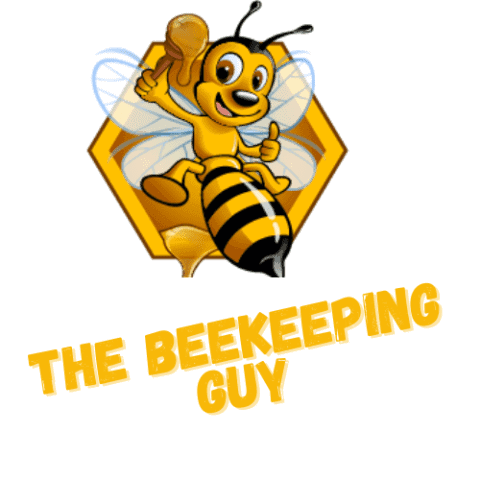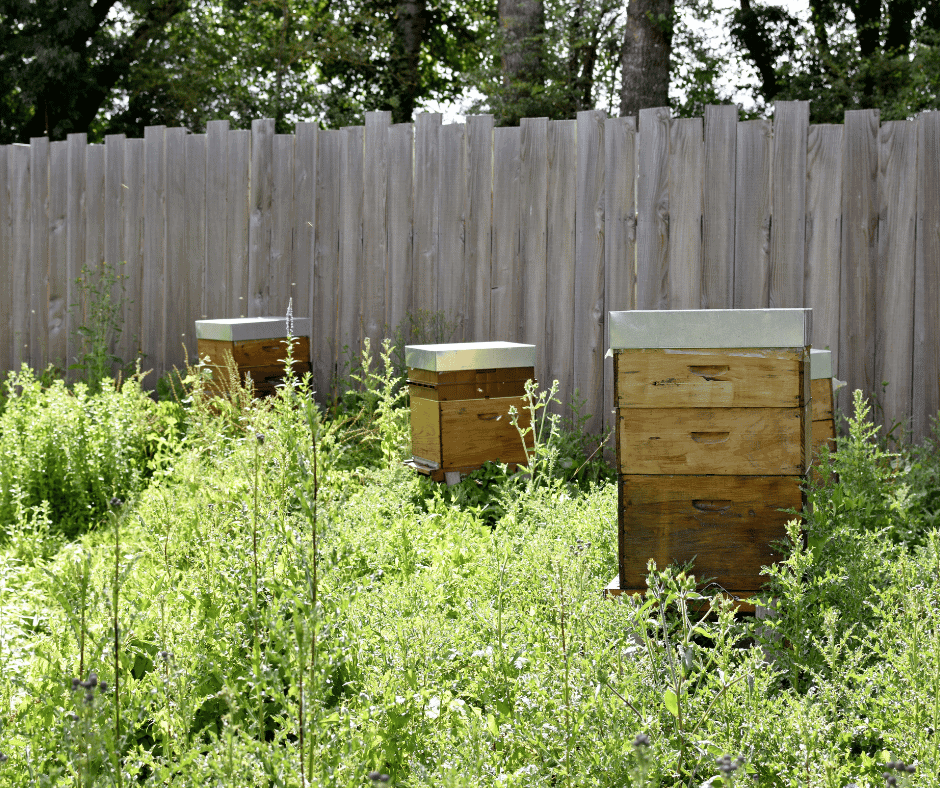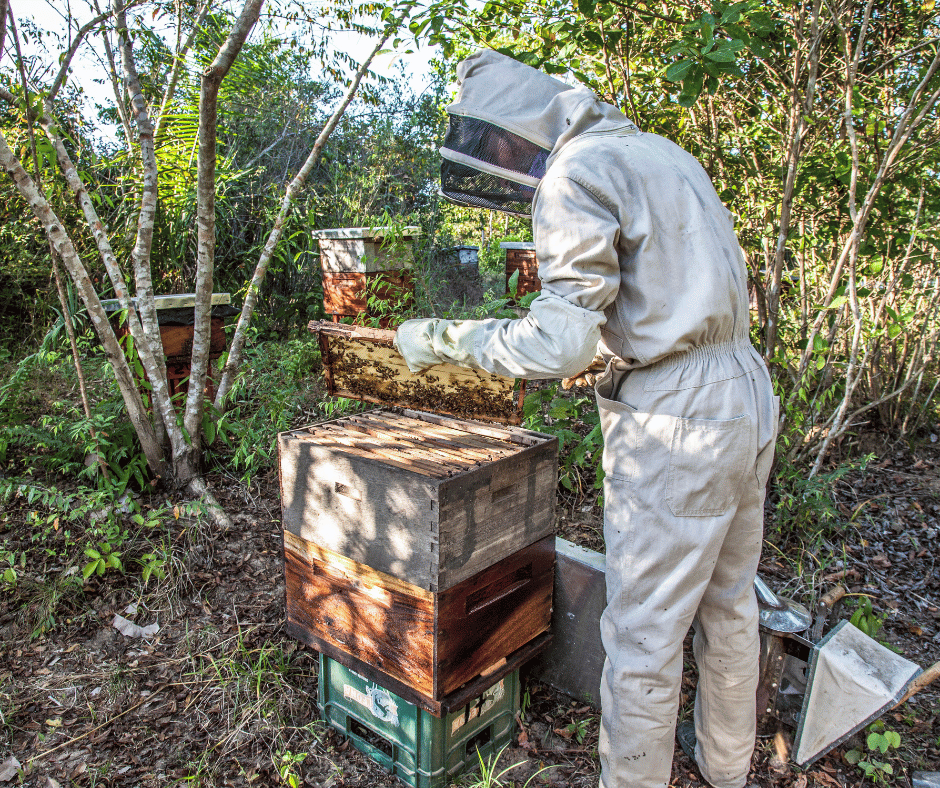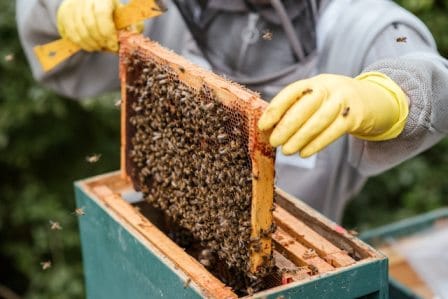
So what exactly is beekeeping? Beekeeping is the practice of maintaining honey bee colonies, typically in man-made hives, for the purpose of collecting honey, beeswax, and other products of the hive, such as propolis and royal jelly.
It also includes breeding and raising queen bees and the management of colonies to ensure their health and productivity.
Table of Contents
A Brief History Of Beekeeping
Beekeeping has a long history, dating back to ancient civilizations such as the Egyptians, Greeks, and Romans. The ancient Egyptians were some of the first to depict beekeeping in their artwork, and honey was used for both culinary and medicinal purposes.
The Greeks and Romans also kept bees, and the practice of beekeeping spread throughout Europe during the Middle Ages.
In the 18th and 19th centuries, beekeeping underwent a period of modernization, with the invention of the moveable-frame hive, which made it easier for beekeepers to inspect and manage their colonies.
The Importance Of Beekeeping
Pollination
Honey bees are responsible for pollinating many of the fruits, vegetables, and nuts that make up a significant portion of our diets. They are also important pollinators for many wildflowers and other plants that provide food and habitat for other wildlife.
Honey Production
Honey is a natural sweetener that has been used for centuries as a food and medicine. It also has many other uses, such as in cosmetics and skin care products.
Other Hive Products
In addition to honey, beekeeping also produces other valuable products such as beeswax, propolis, and royal jelly.
Preservation Of Biodiversity
By helping to pollinate plants, honey bees play a critical role in maintaining biodiversity.
Teaching Opportunities
Beekeeping can be a valuable learning experience for both children and adults. It can teach about the importance of bees in the ecosystem, the process of honey production, and the importance of conservation.
Beekeeping is a practice that has been around for centuries, and it’s still playing an important role in today’s world. It’s not only a way to produce honey but also a way to help preserve biodiversity, providing food and habitat for other wildlife, and many other benefits.
Types Of Bees
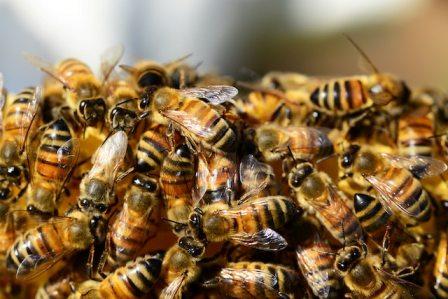
Honey Bees
Honey bees are social insects that live in colonies or hives. They are known for their distinctive yellow-orange and black-striped pattern, and they have a fuzzy appearance due to the dense hairs on their bodies.
Worker bees are the most numerous in a colony, and they are responsible for foraging for nectar and pollen, building and repairing the hive, and caring for the young.
Queen bees are responsible for laying eggs and maintaining the colony’s reproductive success.
Drone bees, the male bees, have the sole purpose of mating with virgin queen bees.
Honey bees are the most common type of bee kept by beekeepers and play a crucial role in pollination and honey production. Their colonies are managed by beekeepers to ensure their health and productivity.
Beekeepers will inspect their hives regularly to monitor the colony’s health, remove any diseases or pests, and ensure that the bees have enough food and space.
They will also harvest honey and other hive products, such as beeswax, propolis, and royal jelly, from the hives.
Bumblebees
Bumblebees are large, fuzzy, and typically black and yellow or black and orange in color. They are social insects that live in colonies, but their colonies are much smaller than those of honey bees.
Bumblebees are also known for their ability to fly at lower temperatures and in less favorable conditions than honey bees.
Bumblebees are not typically kept by beekeepers, but they play an important role in pollination. They are efficient pollinators of many crops, including tomatoes, peppers, berries, and other plants that are not easily pollinated by honey bees.
Bumblebees are also important pollinators of wildflowers. Some farmers use bumblebees to pollinate their crops in greenhouses.
Other Types Of Bees
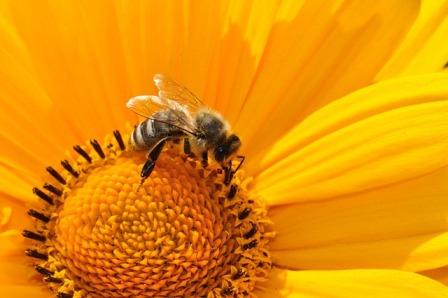
There are many other types of bees, including mason bees, leafcutter bees, and sweat bees.
These bees are typically smaller and less fuzzy than honey bees and bumblebees. They also live in smaller colonies or even as solitary bees. They are not typically kept by beekeepers, but they play an important role in pollination.
They are efficient pollinators of many crops, and also wildflowers. They are important for maintaining biodiversity in the ecosystem and for maintaining the population of other pollinators like honey bees and bumblebees.
Some farmers use these types of bees to pollinate their crops in greenhouses or other enclosed spaces where honey bees may not be able to survive.
As you can see there are different types of bees that have different characteristics and roles.
Honey bees are the most common type of bee kept by beekeepers and are important for pollination and honey production.
Bumblebees and other types of bees also play an important role in pollination, especially in certain crops and wildflowers.
These different types of bees contribute to the ecosystem’s biodiversity and help to maintain healthy populations of pollinators.
Equipment And Supplies
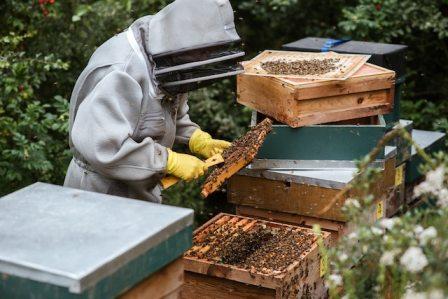
Hive Types
There are several types of hives that are used in beekeeping, each with its own unique characteristics and benefits.
The most common types of hives include:
Langstroth Hives: These hives have a series of stacked boxes, called supers, that can be added or removed as needed. They are the most popular type of hive used by commercial beekeepers.
Top-Bar Hives: These hives have a single, long box with bars across the top for the bees to build a comb. They are often used by hobbyist beekeepers and those who prefer a more natural approach.
Warre Hives: These hives are similar to top-bar hives, but they have vertical bars instead of horizontal ones. They are also often used by hobbyist beekeepers and those who prefer a more natural approach.
Flow Hives: These hives are designed to make it easy for beekeepers to harvest honey without disturbing the bees. The honey can be harvested by turning a lever which causes the comb to separate from the honey, allowing the honey to flow out of the hive.
Pros and Cons of each type:
Langstroth Hives:
Pros: They are easy to manage, and the removable frames make it easy to inspect the colony and harvest honey. They are also readily available and widely used, making it easy to find parts and equipment.
Cons: They can be expensive, and they require a lot of space to store the extra boxes.
Top-Bar Hives:
Pros: They are relatively inexpensive and easy to construct, and they provide a more natural environment for the bees.
Cons: They can be more difficult to manage, and it can be harder to harvest honey without damaging the comb.
Warre Hives:
Pros: They are relatively inexpensive and easy to construct, and they provide a more natural environment for the bees. They also require less frequent inspections.
Cons: They can be more difficult to manage, and it can be harder to harvest honey without damaging the comb.
Flow Hives:
Pros: They make it easy to harvest honey without disturbing the bees.
Cons: They are relatively expensive and not widely available, and the design of the hive can make it difficult to inspect the colony.
Protective Gear
Protective gear is essential for beekeepers to wear when working with their hives. This gear includes a beekeeping suit, veil, gloves, and boots. The beekeeping suit is typically made of thick, protective material and covers the entire body, including the head and face.
The veil is a mesh screen that covers the face and head, and it allows the beekeeper to see without getting stung.
Gloves and boots are also worn to protect the hands and feet from stings.
Protective gear is important for beekeepers to wear because it helps to protect them from getting stung. Bees are attracted to the scent of human sweat and can become agitated if they feel their hive is being threatened.
Wearing protective gear helps to reduce the risk of getting stung and also helps to reduce the number of bees that fly around the beekeeper, making it easier to work with the hives.
Tools And Equipment
Tools and equipment that are commonly used by beekeepers include a hive tool, a smoker, and a protective veil.
Importance of using the right tools and equipment: Using the right tools and equipment is essential for beekeeping because it makes the job easier and safer.
The hive tool, for example, is specifically designed for working with hives and allows the beekeeper to easily open and inspect the hives without damaging them.
A smoker is also an important tool that helps to calm the bees and make it safer for the beekeeper to work with them. Using the right tools and equipment can also help to increase the efficiency and productivity of the beekeeping operation.
A protective veil, as mentioned before, is also an essential piece of equipment that helps to protect the beekeeper’s face and head while working with the hives.
The equipment and supplies used in beekeeping play a vital role in the operation’s success. The right type of hive, protective gear, and tools are essential for the beekeeper to safely and efficiently manage their colonies and harvest honey and other hive products.
It’s crucial for beekeepers to research and invest in the right equipment, as it will make their job easier, safer, and more productive.
Starting a Bee Colony
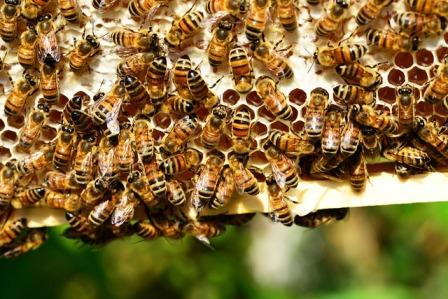
Finding A Location
Factors to consider when choosing a location:
Climate: The climate should be suitable for the type of bees you plan to keep. Honey bees, for example, need a warm and sunny climate, while bumblebees can tolerate cooler temperatures.
Water source: A reliable water source should be nearby for the bees to drink.
Forage: The location should have plenty of forage for the bees to gather nectar and pollen.
Distance to other colonies: It’s important to consider the distance to other bee colonies to avoid problems with robbing or disease transmission.
Accessibility: The location should be easy to access for the beekeeper to maintain the colony and harvest honey.
Legal restrictions: It’s important to check with local authorities to ensure that beekeeping is allowed in your area and if there are any specific regulations that need to be followed.
Tips for finding the perfect location:
Research: Research different locations to find one that meets all of the criteria mentioned above.
Visit potential locations: Visit potential locations at different times of the day to observe the forage, water sources, and the overall environment.
Talk to other beekeepers: Ask other beekeepers about their experiences with different locations.
Obtaining Bees
Options for obtaining bees:
Package bees: Package bees are available from many beekeeping suppliers and typically consist of a queen bee and several thousand worker bees.
Nucleus colonies: Nucleus colonies, also known as nucs, are small colonies that consist of a queen bee, a few frames of brood, and a small number of adult bees.
Capturing a swarm: Capturing a wild swarm of bees is another option, but it can be challenging and requires knowledge and experience.
Tips For Buying Bees
Research suppliers: Research different suppliers to find one that has a good reputation and sells healthy bees.
Purchase from local suppliers: Buying bees from local suppliers can help ensure that the bees are well adapted to the local climate and forage.
Inspect the bees before buying: Inspect the bees before buying to make sure they are healthy and free from disease.
Setting Up The Hive
Tips for setting up the hive correctly:
Follow the manufacturer’s instructions: Make sure to follow the manufacturer’s instructions when assembling the hive.
Install the bees in the evening: Install the bees in the evening when they are less active.
Monitor the colony regularly: Monitor the colony regularly for the first few weeks to make sure they are building comb and the queen is laying eggs.
Provide the bees with food: Provide the bees with food to help them establish their colony.
Starting a bee colony requires careful planning and preparation. Finding the perfect location, obtaining healthy bees, and setting up the hive correctly are all crucial steps in starting a successful colony. It’s essential for new beekeepers to research and understands the different options for obtaining bees and the factors to consider when choosing a location.
And also, it’s important to monitor the colony regularly and provide the bees with food to ensure their survival and success.
Additionally, it’s important to keep in mind any legal restrictions and regulations that may apply in your area and to comply with them.
Starting a bee colony can be a rewarding and educational experience, but it also requires dedication and responsibility.
New beekeepers should be prepared to invest time and resources into the colony and to educate themselves on proper beekeeping techniques and practices.
Joining a local beekeeping association or taking a beekeeping course can also be helpful in learning the basics and getting connected with other experienced beekeepers.
Maintaining a Bee Colony
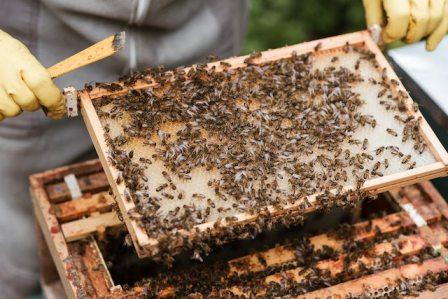
Feeding
How to feed bees: Feeding bees can be done by providing them with sugar syrup or pollen. Sugar syrup can be made by mixing sugar and water in a ratio of 2:1, heating it to dissolve the sugar, and then allowing it to cool. Pollen can be purchased from beekeeping suppliers or collected from local wildflowers.
The feed can be provided to the bees by using a feeder, which is a container that holds the sugar syrup or pollen and can be placed inside or outside the hive.
What to feed bees: Sugar syrup: Bees can be fed sugar syrup when there is a lack of natural forage, such as during a drought or in the winter when flowers are not blooming.
Pollen: Pollen is a crucial source of protein for bees, and it’s essential for the development of brood.
Disease management
Common diseases in bees: Some common diseases that can affect bees include:
American Foulbrood (AFB): A bacterial disease that can kill the entire colony if left untreated.
European Foulbrood (EFB): A bacterial disease that can kill the entire colony if left untreated.
Wax moth: A pest that can damage the comb and weaken the colony.
Varroa mite: A parasitic mite that can weaken the colony and spread disease.
Prevention and treatment of diseases: Regularly inspect the colony: Regularly inspecting the colony can help to detect diseases early and take action before they become a problem.
Keep the colony healthy: Keeping the colony healthy by providing them with enough food, water, and adequate living space can help to prevent diseases.
Treat diseases early: Treating diseases early can help to prevent them from spreading and causing more damage.
Use of approved treatments: Only use treatments that are approved for use in beekeeping.
Swarm management
What is a swarm: A swarm is a natural process in which a colony of bees reproduces by dividing into two colonies, with the original colony remaining in the hive and the new colony leaving to start a new hive.
How to prevent swarming: Regularly inspecting the colony: Regularly inspecting the colony can help to detect signs of swarming, such as the presence of queen cells, and take action before the swarm leaves.
Providing enough space: Providing the colony with enough space to grow can help to prevent swarming.
Splitting the colony: Splitting the colony by creating a new colony from the existing one can help to prevent swarming by reducing the population density in the original colony.
Harvesting honey
When to harvest honey: Honey can be harvested when the bees have filled the comb with honey and capped it with wax. This typically occurs in the late spring or early summer.
How to harvest honey: Removing the frames: Carefully remove the frames from the hive and use a honey extractor to spin the honey out of the comb.
Straining the honey: Strain the honey to remove any debris or wax particles.
Bottling the honey: Bottle the honey in airtight containers and store it in a cool, dark place.
As you can see, maintaining a bee colony requires regular attention and care. Providing the colony with food and water, managing diseases and pests, preventing swarming, and harvesting the honey are all important tasks that need to be done.
Keeping the colony healthy and productive is the key to success in beekeeping, and it’s essential for beekeepers to educate themselves on the proper techniques and best practices for maintaining a colony.
Recap of Key Points
Beekeeping is the practice of raising bees for their honey and other products.
Honeybees, bumblebees, and other types of bees are commonly kept in beekeeping.
Hive types, protective gear, and tools and equipment are essential for beekeeping.
Starting a bee colony involves finding the perfect location, obtaining healthy bees, and setting up the hive correctly.
Maintaining a bee colony involves regular tasks such as feeding, disease management, swarm management, and harvesting honey.
Beekeeping is a rewarding and educational hobby that can provide a source of honey and other products, as well as support the local ecosystem. It requires dedication and commitment, but it can also be a lot of fun and a great way to connect with nature.
Beekeeping can be challenging, but with the right knowledge and techniques, it can be a successful and enjoyable experience.
Additional resources for further learning
Books: “The Beekeeper’s Handbook” by Diana Sammataro and Alphonse Avitabile or “The Complete Idiot’s Guide to Beekeeping” by Dean Stiglitz and Laurie Herboldsheimer are some popular books on beekeeping that can provide a comprehensive introduction to the subject.
Online courses: There are many online courses available on beekeeping that can provide in-depth information and hands-on training.
Local beekeeping associations: Joining a local beekeeping association can provide access to experienced beekeepers and resources for further learning and support.
YouTube channels: There are many beekeeping channels on YouTube that can provide information and tips on beekeeping.
In conclusion, beekeeping is a fascinating and rewarding hobby that can provide honey, and other products and also help the local environment.
It requires dedication and commitment, but with the right knowledge and techniques, it can be a successful and enjoyable experience. T
There are many resources available for further learning and support, including books, online courses, local beekeeping associations, and YouTube channels.
Frequently Asked Questions
What are the basic supplies and equipment needed for beekeeping?
- Hive: This is the structure that houses the bees, and it can come in a variety of types such as Langstroth, top-bar, or Warre hives.
- Protective gear: This includes a veil, gloves, and a suit to protect the beekeeper from getting stung.
- Hive tool: This is a specialized tool that is used to open and inspect the hives.
- Smoker: This is a device that generates smoke to calm the bees when working with the hives.
- Protective veil: This is a piece of equipment that helps to protect the beekeeper’s face and head while working with the hives.
- Feeder: A container that holds the sugar syrup or pollen and can be placed inside or outside the hive to feed the bees.
- Extractor: A device used to spin the honey out of the comb.
- Strainer: A device used to remove debris or wax particles from the honey before bottling it.
- Bottling equipment: This includes containers, such as jars, and a capping machine to seal the jars of honey.
- Pest and disease management tools: These include tools such as mite boards, swarm traps, and medications to prevent and treat common pests and diseases.
How much space is required to keep bees?
The amount of space required to keep bees depends on the number of hives and the type of beekeeping operation. On average, each hive requires about 10 square feet of space. However, for a backyard beekeeping setup, you may need more space to accommodate for a few hives. It’s important to keep in mind that the bees will need a nearby source of water and forage in order to thrive, so the location should have access to both. It’s also important to consider the distance to other colonies to avoid problems with robbing or disease transmission.
How much time is needed to maintain a bee colony?
The amount of time required to maintain a bee colony can vary depending on the number of hives and the level of management. A beginner beekeeper with one or two hives may need to spend a few hours per week on maintenance tasks, while a more experienced beekeeper with several hives may need to spend more time.
Tasks such as inspecting the colony, feeding the bees, monitoring for pests and diseases, and harvesting honey all require time and attention. Additionally, beekeepers also need to spend time learning about beekeeping practices and staying current with the latest information about bees and beekeeping.
It’s important to note that beekeeping is a seasonal activity, some seasons require more attention than others. For example, during the spring and summer, the colony is growing and the bees are actively foraging, which means more frequent inspections are needed. In contrast, during the fall and winter, the colony is generally more dormant, and less attention is needed.
How many bees are needed to start a colony?
The number of bees needed to start a colony can vary depending on the type of bees and the method of starting the colony. Typically, a colony consists of a queen bee, a few thousand worker bees, and drones.
For package bees, which are available from many beekeeping suppliers and typically consist of a queen bee and several thousand worker bees, this is the most common method of starting a colony.
Another method is using Nucleus colonies (nucs), which are small colonies that consist of a queen bee, a few frames of brood, and a small number of adult bees.
Capturing a wild swarm of bees is another option, but it can be challenging and requires knowledge and experience. It’s important to note that starting a colony from a wild swarm can be risky, as the bees may be carrying diseases or pests.
Regardless of the method, it’s important to ensure that the bees are healthy and free from disease before starting a colony. A healthy colony will have a good population of bees, a laying queen, and a good amount of comb and stores of honey and pollen.
How much honey can I expect to harvest from a colony?
The amount of honey that can be harvested from a colony can vary depending on several factors such as the number of hives, the forage availability, the weather, and the beekeeping management practices. On average, a hive can produce around 50-60 pounds of honey per year, but this can vary greatly depending on the location and the season.
A colony that is located in an area with abundant forage and favorable weather conditions will typically produce more honey than a colony located in an area with limited forage or harsh weather conditions.
Also, the beekeeping management practices can greatly affect the amount of honey that can be harvested. For example, if the beekeeper is providing the bees with supplementary feed, this can increase the amount of honey that can be harvested. Additionally, if the beekeeper is not harvesting honey too early, the colony will have enough time to store more honey for themselves, which can decrease the amount of honey harvested.
It’s important to note that it’s not recommended to harvest all of the honey produced by a colony, as bees need enough stores of honey to survive the winter. A good rule of thumb is to leave at least 60-80 pounds of honey for the bees to consume over the winte
What is the best time of the year to start a bee colony?
The best time of the year to start a bee colony depends on the climate and the availability of forage in your area. Typically, the best time of the year to start a bee colony is in the spring when the weather is warm and there is plenty of forage available.
In areas with a mild climate, starting a colony in the spring allows the bees to establish themselves and build up their population before the summer heat. This will give them enough time to gather nectar and pollen, store honey, and grow the colony.
In areas with a harsher climate, starting a colony in the early spring or late fall might be more suitable. Starting a colony in the fall allows the bees to establish themselves before the winter, so they can survive and thrive.
However, it’s important to consider the forage availability in your area, because if the forage is scarce, the bees might not have enough resources to establish and grow the colony. It’s also important to consider the legal restrictions and regulations that may apply in your area and to comply with them
What should I do if I get stung by a bee?
If you get stung by a bee, it’s important to remove the stinger as soon as possible to prevent more venom from entering the body. Here are some steps to take if you get stung:
- Remove the stinger: Scrape the stinger out with the edge of a credit card or a dull knife, or use tweezers to pull it out. Avoid using your fingers as this can squeeze more venom into the sting site.
- Clean the area: Clean the area with soap and water to remove any venom or debris.
- Apply a cold compress: Apply a cold compress, such as an ice pack or a bag of frozen vegetables, to the sting site to reduce swelling and pain.
- Take an over-the-counter pain reliever: Take an over-the-counter pain reliever, such as ibuprofen or acetaminophen, to help with pain and inflammation.
- Watch for signs of an allergic reaction: In some cases, a bee sting can cause an allergic reaction, such as difficulty breathing, hives, or swelling of the face, lips, or tongue. If you experience any of these symptoms, seek medical attention immediately.
It’s also important to note that if you are stung multiple times or if you have a known bee sting allergy, you should seek medical attention immediately.
How do I know if my colony is healthy?
There are several signs that indicate a healthy colony:
- A good population of bees: A healthy colony should have a good population of bees, with a good balance of workers, drones, and a laying queen.
- Adequate stores of honey and pollen: A healthy colony should have a good amount of comb filled with honey and pollen. This is a sign that the colony has a good food source and is able to sustain itself.
- Brood pattern: A healthy colony should have a good brood pattern, with eggs, larva, and capped brood evenly distributed throughout the comb. This is a sign that the colony has a healthy queen and is able to reproduce.
- Absence of pests and diseases: A healthy colony should be free of pests and diseases. Pests such as varroa mites or wax moths can weaken the colony and cause diseases to spread.
- Proper behavior: A healthy colony should exhibit normal behavior, such as foraging, grooming, and tending to the queen and brood. A colony that is not active or is displaying abnormal behavior may be sick or stressed.
Regular inspections of the colony are important to identify these signs and determine the colony’s health. Additionally, it’s important to stay informed about the common pests and diseases that can affect bees and to take appropriate measures to prevent and treat them.
How do I prevent my bees from swarming?
Swarming is a natural process that occurs when a colony of bees splits into two colonies. Here are some steps that can be taken to prevent swarming:
- Regular inspections: Regularly inspecting the colony can help to detect signs of swarming, such as the presence of queen cells, and take action before the swarm leaves.
- Provide enough space: Providing the colony with enough space to grow can help to prevent swarming. When the colony becomes too crowded, the bees will start to prepare to swarm.
- Splitting the colony: Splitting the colony by creating a new colony from the existing one can help to prevent swarming by reducing the population density in the original colony.
- Provide enough food: bees will swarm when they feel that the colony does not have enough food resources. Providing enough food, such as sugar syrup or pollen, can help to prevent swarming.
- Control the queen: Controlling the queen, such as by clipping her wings, can prevent her from leaving the colony and starting a new one.
It’s important to keep in mind that swarming is a natural process for bees, and it’s not always possible to completely prevent it. However, by implementing these steps, you can reduce the risk of swarming and keep your colony healthy and productive.
